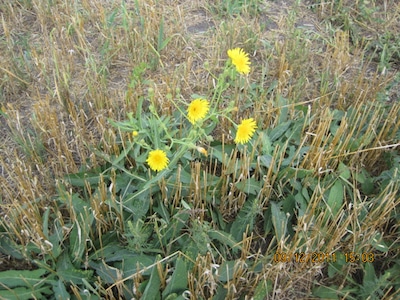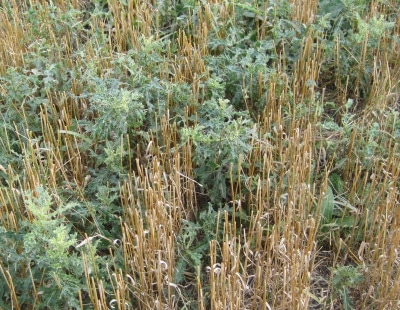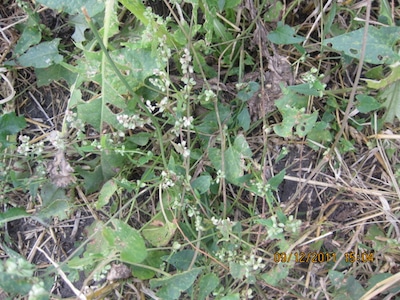Fall Weed Control: Use Products That Won’t Damage Canola in 2012
Growers in Manitoba and southeast Saskatchewan in particular have some very weedy fields after a wet June kept them off the fields for timely herbicide application. The weed photos below were taken this week on a farm in western Manitoba. Growers will want to consider post-harvest herbicide to clean up fields that are planned for canola in 2012.
Step 1: Assess fields for weed presence. If you find narrow-leaved hawk’s beard, stork’s bill, sow thistle, other tough winter annuals, or perennials like dandelion or Canada thistle they are best sprayed this fall. You many not get good control next spring when these weeds are larger, more established, and moving energy into their root systems. Round-leaved mallow and wild buckwheat are also fairly large and well established in some fields.
Step 2: Once the problem weeds are identified, determine whether they are winter annuals or perennials and likely to be still present next spring. If they are, then you should spray. If they are mainly annuals and significant further seed set is unlikely before freeze up, leaving them untreated to die through the winter is probably the most economical choice.
Step 3: If you decide to spray, the list of fall-applied products is fairly short for fields that will be in canola next year. Glyphosate is one choice but there are a few others. Talk to your retailer or agronomist about the best products for specific target weeds and their sizes, and be sure to specify that you intend to seed canola on those acres next year.
Step 4: Warmer temperatures and bright sunshine improve herbicide activity. Apply during the heat of day when perennial weeds are actively growing and putting energy into their roots.
Step 5: Before spraying, make sure weeds are actively growing with new supple leaf area to target. Weeds cut off at harvest need time to accumulate new leaf tissues to act as suitable surfaces for absorption of herbicides applied post-harvest. Even with the recommended 4 to 6 weeks of regrowth, leaf surface area is only a fraction of what it was prior to harvest. Therefore glyphosate rates may need to increase by 2 to 3 times to get the same concentration of glyphosate in the plant. If frost is predicted or has occurred, avoid application until leaf condition of the target weeds can be evaluated.
Too late for pre-harvest glyphosate. Glyphosate needs at least a week and preferably two or three weeks before cutting to allow green weeds to dry enough for combining. Spraying now with the plan to harvest in a couple days may have minimal benefit. Spraying preharvest products immediately before a frost will not protect the crop from frost damage.

Narrow-leaved hawk's beard

Prostrate knotweed

Round-leaved mallow

If weeds are large, herbicide rates may need to be at the high end.

When weeds are cut by the swather or hit by frost, they need to start growing again and have supple healthy leaves in order for herbicide to enter the weeds.

Wild buckwheat
Source: Canola Council of Canada